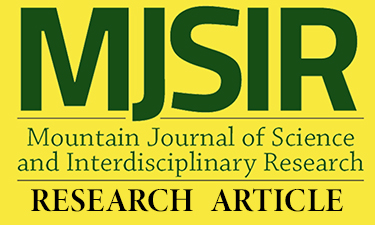Pre-Service Teachers' Technology Literacy Skills for Blended Learning: Case of Four Universities in Baguio City and Benguet, Philippines
Main Article Content
Abstract
The study aimed to determine the level of technology literacy skills of pre-service teachers necessary for blended learning. The study employed the descriptive comparative design. Respondents of the project included 467 pre-service teachers from four public and private universities in Baguio and Benguet, Philippines. Descriptive and inferential statistics were used to treat the data gathered. Findings revealed that pre-service teachers are moderately capable in their technology literacy skills necessary for blended learning. There is no difference in the technology literacy skills regardless of the pre-service teachers’ degree program. However, those from private teacher education institutions (TEIs) manifested higher technology literacy skills than their public TEI counterpart.
Article Details
References
Bailey, J., Martin, N., Schneider, C., & Vander Ark, T. (2013). Blended learning implementation guide. Version 1.0. Ann Arbor, MI: Proquest LLC.
Bhattacharjee, B. & Deb, K. (2016). Role of ICT in 21st century’s teacher education. International Journal of Education and Information Studies, 6(1): 1-6.
Bernardo, A., Ganotice, F., & King, R. (2014). Motivation Gap and Achievement Gap Between Private High Schools in the Philippines. Asia-Pacific Education Researcher, 24(4): 657-667. https://eric.ed.gov/?id=EJ1180735
Boud, D., & Felleti, G. (1991). The challenge of problembased learning. London: Kogan.
Commission on Higher Education. (2004). CMO No. 30, Series of 2004 – Revised Policies and Standards for Undergraduate Teacher Education Curriculum. https://ched.gov.ph/wpcontent/uploads/2017/10/CMO-No.30-s2004.pdf
Cox, M., Webb, M., Abbott, C., & Blakely, B. (2003). ICT and pedagogy. London: Becta, 2003.
Delos Angeles, M.A.G.G. (2019). Correlates of Performance in the Licensure Examination for Teachers. Asia Pacific Journal of Multidisciplinary Research, 7(2) Part II: 65-74. http://www.apjmr.com/wp-content/uploads/2019/05/APJMR-2019.7.2.2.07.pdf
Earle, R.S. (2002). The Integration of instructional technology into public education: Promises and challenges. Educational Technology, 42(1): 5-13.
Environmental Conscience. (n.d.). Private vs. Public School – 24 Key Pros & Cons. https://environmental-conscience.com/private-versuspublic-schools-pros-cons/
Felea, C. (2013). Blended learning and ICT integration in higher education: The case for Babe-Bolyai University. Studia Universitatis Babes-Bolyai - Philologia, 58(2): 7-22. https://www.ceeol.com/search/article-detail?id=101323
Garrison, R.D., & Vaughan, N.D. (2007). Blended learning in higher education: Framework, principles, and guidelines. San Francisco, CA: Jossey-Bass, Inc.
Gerstein, J. (2016). Helping Your Students Learn To Reflect On Their Learning. TeachThought.
https://www.teachthought.com/learning/helpingstudents-learn-reflect-learning/
Humes, D. (2015). Effects of Online Collaborative Learning on Student Engagement and Academic Success. University of Wisconsin‐River.
Jung, I. (2005). ICT – Pedagogy integration in teacher training: application cases worldwide. Educational Technology & Society, 8(2): 94-101. https://www.jstor.org/stable/jeductechsoci.8.2.94
Mandell, S, Sorge, D.H., & Russell, J.D. (2002). Tips for technology integration. TechTrends, 46(5): 39-43. https://www.learntechlib.org/p/95162/
Marquis, C. (2004). WebCT survey discovers a blend of online learning and classroom-based teaching is the most effective form of learning today. WebCT.com.
National Center for Biotechnology. (2021). Knowledge creation in IT projects to accelerate digital innovation: two decade systematic literature review. Library of Medicine. https://www.ncbi.nlm.nih.gov/pmc/articles/PMC8667007/
Norton, P. & Sprague, D. (2001). Technology for Teaching. Allyn & Bacon, A Pearson Education Company, Needham Heights.
Novak, M.C. (2019). Communication Technology: What is ICT and its Components. G2. https://learn.g2.com/communication-technology
Robinson, B. & Latchem, C. (2003). Teacher education through open and distance learning, 3. Psychology Press. Routledge Falmer, London.
Rossett, A., & Frazee, R.V. (2006). Blended learning opportunities. AMA Special Report. American Management Association.
http://www.amanet.org/training/seminars/BlendedLearningOpporunities-45.aspx.
Savery, J.R., & Duffy, T.M. (1995). Problem based learning: An instructional model and its constructivist framework. Educational Technology, 35(5): 31-38. https://www.jstor.org/stable/44428296
Scheper, E. (2013). Comparing public and private schools. Honors College Capstone Experience/ Thesis Projects. Paper 437.
https://digitalcommons.wku.edu/stu_hon_theses/437
Technohella (2011). Re: Word Processing Skills in the Classroom. https://www.technokids.com/blog/technology-skills/word-processing-skillsclassroom/
United Nations Educational, Scientific and Cultural Organization. (2011). UNESCO ICT competency framework for teachers. https://iite.unesco.org/pics/publications/en/files/3214694.pdf
United Nations Educational, Scientific and Cultural Organization. (2018). UNESCO ICT competency framework for teachers. https://unesdoc.unesco.org/ark:/48223/pf0000265721
Wang, Q., & Woo, H.L. (2007). Systematic Planning for ICT Integration in Topic Learning. Educational Technology & Society, 10(1): 148-156. http://ifets.info/journals/10_1/14.pdf
Yerasimou, T. (2010). Examining interactivity and flow in a blended course to advance blended learning practices. Ann Arbor, MI: Proguest Dissertations Publishing.

